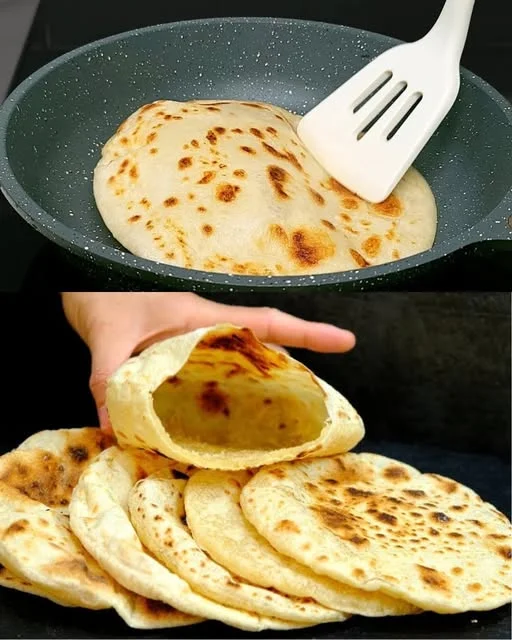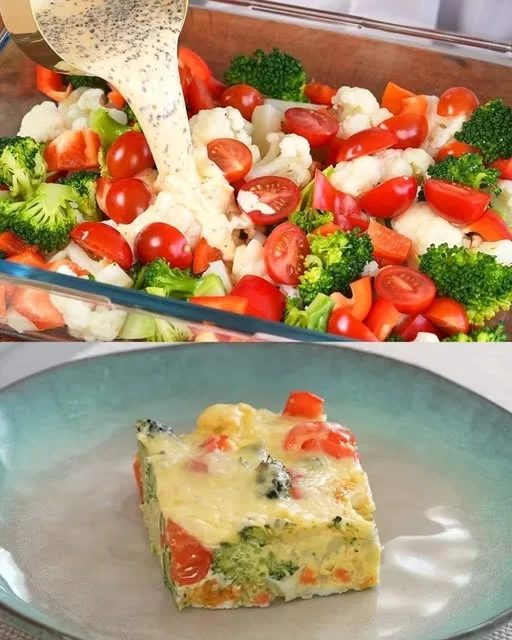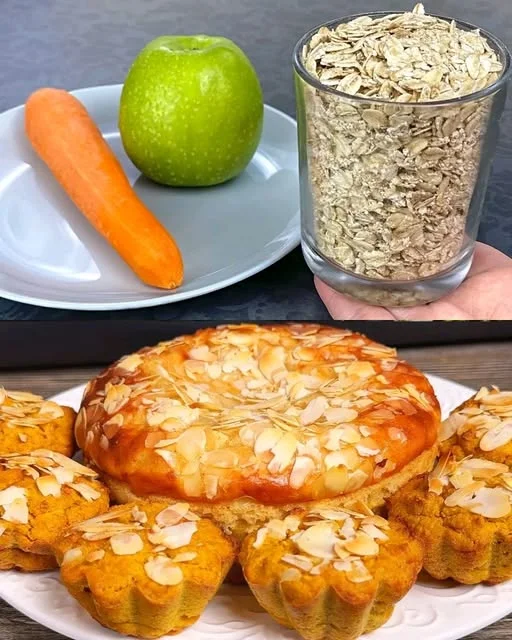Sometimes, the simplest meals hold the most power to make a difference in our day. For me, one of those moments came on a particularly hectic morning when I was running late for work, barely awake, and struggling to put together a nutritious breakfast. The thought of spending time preparing something complex felt overwhelming, but I didn’t want to skip the most important meal of the day. That’s when I remembered a quick and comforting recipe my grandmother used to make. It was something so simple, yet so satisfying: a slice of crispy bacon, melted cheese, and a perfectly fried egg sandwiched between toasted bread.
In those moments of chaos, there’s something truly special about food that can ground you. This breakfast is more than just a combination of ingredients; it’s a reminder of how little moments of care can make all the difference. A few minutes in the kitchen, a dash of salt, and the joy of knowing you’re starting your day off right—this recipe became a lifesaver that morning, and it’s continued to be my go-to breakfast when I need something fast but still full of flavor and nutrition.
The Beauty of Simplicity
At its core, this breakfast is built around one of the most basic and beloved comfort food combinations: bread, bacon, cheese, and eggs. But sometimes, the simplest dishes are the ones that deliver the most satisfaction. The crispy bacon provides a satisfying crunch, the gooey melted cheese adds a rich creaminess, and the perfectly fried egg with its silky yolk offers a touch of indulgence. Together, these elements come together to create a meal that’s not only easy to make but is surprisingly filling and flavorful.
The best part? It only takes five minutes from start to finish, which means you can enjoy a hearty breakfast even on the busiest of mornings. In a world where time seems to be constantly slipping away, it’s a small but powerful reminder that you don’t need to spend hours in the kitchen to eat something delicious.
Ingredients:
| Ingredient | Quantity |
|---|---|
| Slices of bread | 6 |
| Slices of cheese | 6 |
| Slices of bacon | 6 |
| Eggs | 4 |
| Salt | To taste |
| Black pepper | To taste |
| Parsley | For garnish |
| Green onion | For garnish |
Directions:
- Cook the Bacon: In a pan over medium heat, cook the bacon slices until they are crispy and golden. Remove from the pan and set aside on paper towels to drain excess fat.
- Prepare the Toast: In the same pan, toast the slices of bread for about 1-2 minutes on each side until they are golden brown. You can also use a toaster if preferred.
- Fry the Eggs: While the bread is toasting, crack the eggs into the pan and cook them sunny-side up or to your desired doneness. Season with salt and black pepper.
- Assemble the Breakfast: Place a slice of cheese on each piece of toast. Add a slice of bacon on top of the cheese, and then carefully place a fried egg on top of the bacon. Season with a pinch more salt and pepper, if desired.
- Garnish and Serve: Sprinkle with freshly chopped parsley and green onions for added flavor and color. Serve immediately!
Nutritional Information (per serving):
| Nutrient | Amount |
|---|---|
| Calories | 400 kcal |
| Protein | 23 g |
| Carbohydrates | 32 g |
| Fat | 23 g |
| Fiber | 2 g |
| Sugars | 2 g |
Quick, Nourishing, and Energizing
When you’re pressed for time, one of the biggest challenges is finding something that will keep you full and energized throughout the morning. This breakfast does just that. The eggs provide a great source of protein, which helps keep you feeling full and satisfied. The bacon adds healthy fats, while the cheese adds a creamy texture and a savory bite. The bread offers carbohydrates to give you that quick energy boost you need to get through the day.
Because it’s so well-balanced, this breakfast is not only quick but also nourishing. Unlike a sugary cereal or processed snack, it provides a steady release of energy without leaving you feeling sluggish or crashing later. Whether you’re heading out the door to tackle a busy workday or preparing for a weekend of errands, this meal is a great way to fuel your body.
Why Bacon, Eggs, and Cheese?
There’s a reason the combination of bacon, eggs, and cheese has been a breakfast staple for so long—it’s because it just works. These ingredients, when paired together, create a harmonious balance of flavors and textures. The salty, crispy bacon contrasts perfectly with the smooth, velvety eggs, while the cheese adds a rich and indulgent element to the dish. The bread acts as the perfect vessel to hold everything together, adding a satisfying crunch with every bite.
This combination also appeals to a wide variety of tastes, making it a versatile choice for just about anyone. If you prefer a different type of cheese, you can easily substitute cheddar, mozzarella, or even a slice of creamy Swiss. For those who want to reduce their meat intake, turkey bacon or a vegetarian alternative can also work perfectly. This dish offers endless possibilities for customization, making it a reliable go-to for whatever you have in your fridge.
How This Recipe Can Fit Into Your Routine
The beauty of this quick breakfast is that it’s not only fast but also adaptable. You can enjoy it as part of your morning routine or even turn it into a snack later in the day. On weekends, when you have a bit more time, you can turn it into a more elaborate meal by adding some fresh herbs, sautéed vegetables, or a drizzle of hot sauce to give it an extra kick.
For those with dietary restrictions or preferences, this recipe is easily customizable. Want to make it gluten-free? Simply swap the bread for a gluten-free alternative. Looking for a lower-fat option? Opt for leaner bacon or skip the cheese entirely. The versatility of this meal makes it perfect for anyone, no matter their taste or dietary needs.
Frequently Asked Questions
1. Can I make this breakfast in advance?
While this breakfast is best served fresh and hot, there are ways to prepare parts of it ahead of time to make the process even faster in the morning. You can cook the bacon and store it in the refrigerator for up to 3 days. Similarly, you can fry the eggs in advance, store them in the fridge, and reheat them in the microwave. Toast the bread fresh in the morning for the best texture.
2. Can I use a different type of bread?
Absolutely! The choice of bread is entirely up to you. While traditional white or whole wheat bread works wonderfully, you can opt for sourdough, rye, or even a bagel for added texture and flavor. The key is to pick a bread that will hold up well to the bacon, cheese, and egg without becoming soggy.
3. Is there a way to make this recipe healthier?
There are plenty of ways to make this breakfast lighter if you’re looking for a healthier version. You can switch out the bacon for turkey bacon or a vegetarian option, use a lower-fat cheese, or opt for a whole grain or low-carb bread. You could also skip the cheese entirely for a lower-calorie option and still enjoy the rich flavors of the eggs and bacon.
4. Can I freeze this breakfast for later?
While the toast and bacon can be frozen and reheated, eggs generally don’t freeze well in their cooked form without altering the texture. However, you can freeze cooked bacon and toast the bread separately, and then reassemble and heat up the eggs on the day you plan to eat it.
5. Can I add vegetables to this recipe?
Definitely! If you want to add more nutrients or simply love the combination of vegetables with your eggs, feel free to include some sautéed spinach, mushrooms, tomatoes, or avocado slices. These additions will not only increase the flavor but also boost the nutritional value of your breakfast.
Conclusion: The Power of a Simple Breakfast
In a world that often feels rushed and chaotic, sometimes the simplest meals can have the biggest impact. This breakfast of bacon, cheese, eggs, and toast has saved me on more mornings than I can count. It’s quick, satisfying, and full of flavor—just what you need to start your day right. Whether you’re looking to fuel up for a busy day ahead or just need a quick pick-me-up, this recipe is a perfect reminder that food doesn’t have to be complicated to be amazing.
The next time you find yourself scrambling for time and need a meal that will keep you going, remember that the perfect breakfast doesn’t need to be a time-consuming endeavor. With just a few ingredients and a little creativity, you can whip up a delicious meal in minutes and still enjoy the simple pleasure of a hearty, comforting breakfast.

Recipe That Saved My Morning! Breakfast in 5 Minutes
Ingredients
Method
- Cook the Bacon: In a pan over medium heat, cook the bacon until crispy. Once cooked, remove from the pan and set aside on paper towels to drain excess fat.
- Toast the Bread: In the same pan, toast the bread for 1-2 minutes on each side until golden brown. Alternatively, you can use a toaster for a quicker option.
- Fry the Eggs: While the bread is toasting, crack the eggs into the pan and cook to your preferred doneness (sunny-side-up, scrambled, etc.). Season with salt and black pepper.
- Assemble the Breakfast: Place a slice of cheese on each piece of toasted bread. Add a slice of bacon on top of the cheese, followed by a fried egg. Season with additional salt and pepper if desired.
- Garnish and Serve: Garnish with freshly chopped parsley and green onion. Serve immediately for a quick, satisfying breakfast.
Notes
- If you’re short on time, pre-cook the bacon in advance and store it in the fridge for up to 3 days.
- You can use any type of cheese you prefer, such as cheddar, mozzarella, or Swiss, depending on your taste.
- For a healthier version, consider using turkey bacon or a low-fat cheese option.
- You can easily make this breakfast gluten-free by using a gluten-free bread substitute.









